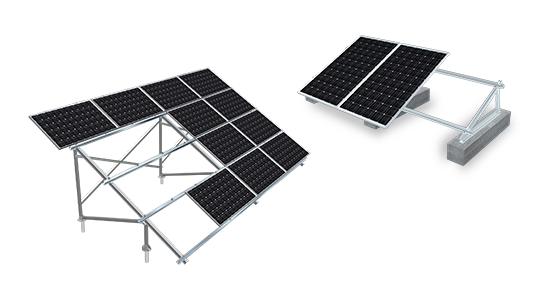Floating Solar: 8 Things You Need To Know
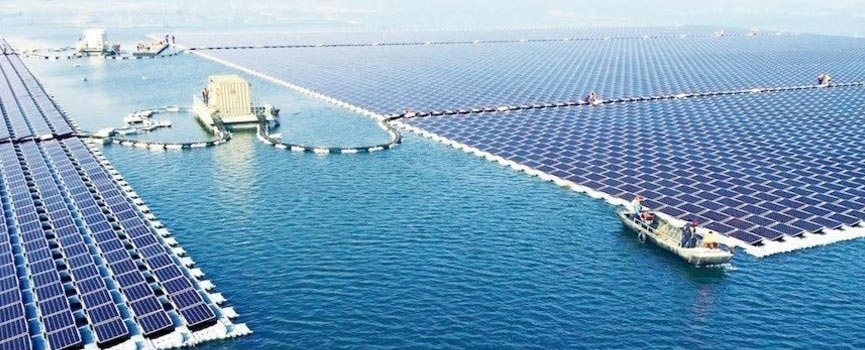
Solar power has grown in popularity in recent years as a result of the global push for renewable energy. While ground-mounted solar panels are the most common way to harness the power of the sun, floating solar is becoming increasingly popular. This power generation system makes use of large bodies of water to set up a floating solar unit that captures enough solar energy without the need for land.
What Is Floating Solar and How Does Its Work?
Solar panels that are mounted on floating structures are referred to as floating solar or floating photovoltaics (FPV). Floating solar systems are commonly used in reservoirs, lakes, and other large bodies of man-made water. The primary benefit of FPV is that it makes use of unused space on the water's surface and does not consume valuable land resources.
The solar panels are firmly attached to buoyant structures to keep them afloat on water bodies and receive adequate sunlight all year. The generated solar electricity is routed to a central inverter before reaching electrical equipment onshore via underwater cables. The power from the inverter is sent to the transformer for stepping down before being fed to the transmission system for delivery to the end user.
The deployment of FPVs in solar bodies of water is a win-win scenario. As the panels prevent excessive heat from entering the water bodies, they cool themselves, increasing energy productivity.
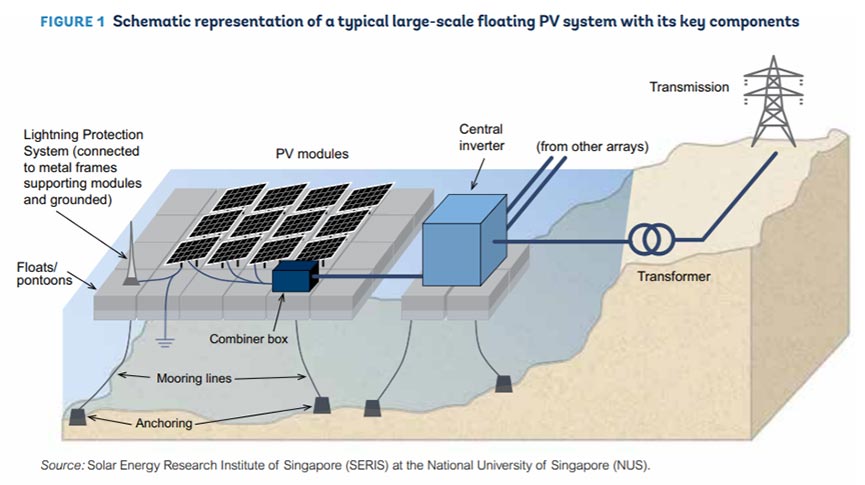
Components of Floating Solar System
PV modules: The actual solar panels capture and transmit solar energy, which is then converted into usable power.
Floaters: These are interconnected plastic rafts on which the solar panels are mounted.
Mooring system – Anchors: These provide support from the water's floor to solar panels floating on the water's surface. Vertical load, drag embedded, and suction anchors are the most common types.
Mooring system - Mooring line: This is the line that connects the floaters on the solar panels to the anchor below. The mooring line's strength is determined by the weight of the solar panels that must be supported.
Combine box: The output of all the solar panels on the array is collected in the combined box and fed to the central inverter.
Central inverter: The central inverter is a large component of the FPV that converts DC to AC for transmission.
Transformer: The transformer reduces the power to allow for easier transmission.
Cabling: Cabling is the wiring that connects the solar panels, combine box, central inverter, and transformer.
Transmission system: The transmission system is the inland connection line that transports power to where it is needed.
Floating walkways: The inland access point for the solar panels. When the solar panels need to be serviced, this is critical.
Features of Floating Solar
The solar module, anti-rust material, vertical and horizontal frames, buoyancy body, inspection footrest, and module mount assembly are the main components of a floating solar power plant. The solar module must be highly humidity resistant, dustproof, lead-free, and well-water-protected. The buoyancy is made of polyethylene, which can hold 2.5 times its weight. The floating structure is made of a magnesium alloy coating that is highly corrosion-resistant.
Advantages and Disadvantages of Floating Solar
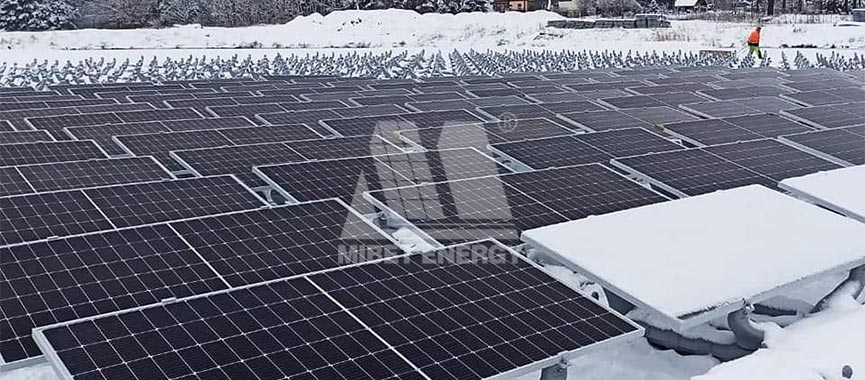
Below are some of the advantages and disadvantages of installing floating solar.
Advantages of Floating Solar
There is no loss of valuable land space: Unlike ground-mounted solar panels, floating systems do not consume valuable land space. The large-scale installation of solar panels thus avoids cutting down trees.
Environmental advantages: They reduce water evaporation and algae blooms on water bodies' surfaces. They produce clean, renewable energy while reducing reliance on nonrenewable fossil fuels.
Higher solar panel performance: Because the bodies of water that host floating solar arrays help cool the solar equipment, the panels produce electricity at a higher efficiency in hot climates than they would otherwise.
Disadvantages of Floating Solar
Expensive to Install: Installing them is more expensive than traditional PV systems because they require specialized equipment and knowledge.
Limited applicability: This technology is not suitable for everyone. Many floating solar installations are large-scale, supplying power to large communities, businesses, or utility companies. If you want solar, rooftop installation or ground-mounted solar is the better option.
Disruption to aquatic life: The installation prevents sunlight from penetrating the water's surface, limiting the wildlife that lives there. Because the physical structure may injure animals, it is recommended that the panels be installed on man-made lakes and reservoirs with limited wildlife.
Maintenance of a Floating Solar Panel
Because water provides cooling, floating solar panels require little maintenance. Rainfall also aids in the cleaning process. The following measures are taken to clean and maintain solar panels.
Manual cleaning: For manual cleaning of floating solar panels, professional workers and appropriate materials should be selected. When selecting materials, extreme caution is required. This is due to the fact that certain cleaning chemicals can impair the performance of floating solar panels.
Sprinklers: In self-cleaning, both air and water can be used. Sprinklers are appropriate for arid climates. They simulate the cleaning effect of rainfall, allowing them to clean the panels at a low cost.
Forced airflow: Forced airflow from an air conditioner is also used for cleaning.
Robotic: Robotic maintenance techniques aid in the cleaning and repair of floating solar panels. Despite the high purchase price, it is also a cost-effective option that reduces water waste.
The Cost of Building a Floating Solar Power Plant
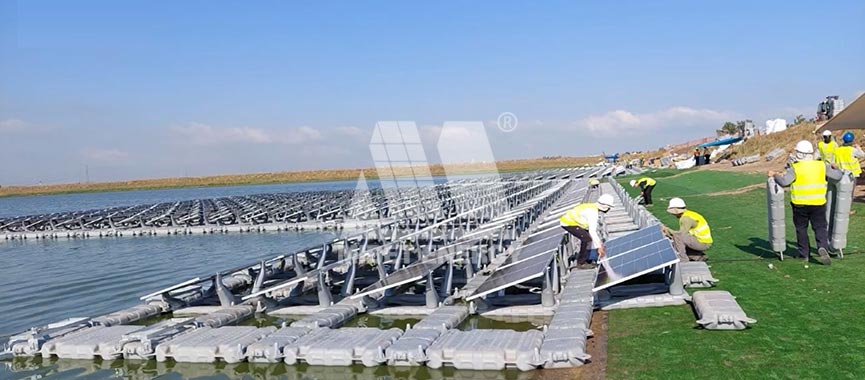
The cost of constructing a floating solar power plant will vary depending on the project's size and location. Larger projects will generally be more expensive to build than smaller ones. The cost of land will also factor into the overall cost of the project. Floating solar power plants are typically constructed in sunny areas near large bodies of water, such as reservoirs. Building a floating solar power plant in an area with high winds and waves will be more expensive than in a calm location.
Aside from the cost of construction, the cost of maintaining a floating solar power plant must be considered. Repairs, replacement parts, and routine maintenance can all be included in these costs. When all of these costs are considered, the cost of constructing a floating solar power plant can be significant. The good news is that there are numerous advantages (including cost advantages) to be had throughout the lifespan of the floating solar plant.
Challenges of Setting up a Floating Solar Power Plant
In comparison to traditional ground-mounted and rooftop solar, the development of floating solar plants presents unique challenges due to hydrodynamic loads on the structure, corrosion risk, and additional components that must be designed, installed, and maintained, such as floats, anchors, and mooring lines. These difficulties are heavily influenced by the location, size, type of water body, structure, and environmental conditions. Doing a site-specific design and assessment will help floating solar projects, both new ones and ones that are already up and running, reduce risks.
As a result, establishing a floating solar plant necessitates careful planning and preparation. Once operational, however, an FPV can provide clean, efficient energy for the next 25 years.
Are Floating Solar Panels More Efficient Than Land Solar Power Plants?

There is a lot of disagreement about whether floating solar panels are more efficient than solar power plants on land. Some argue that the water cools the solar panels, increasing their efficiency. Others argue that the water reduces the efficiency of the panels by reflecting sunlight away from them.
The truth is that both arguments are valid. Floating solar panels, on the other hand, have been shown in studies to be about 10% more efficient than land solar power plants. This is because the water cools the panels, allowing them to work more efficiently. The primary motivation for the owner to deploy an FPV system is to avoid occupying land and reduce water evaporation.
The Future of Floating Solar Farms
As the price of renewable energy continues to drop, the barriers to entry will also get lower. Current floating solar technology does necessitate a higher one-time installation cost. Nonetheless, when compared to its long-term effects on preventing energy leaks of up to 15%, at least during the solar panels' 25-year lifespan, floating solar is actually more cost-effective, and arguably has advantages over ground-based solar.
Solar power is becoming a more affordable, accessible, and efficient energy source, and we must find creative ways to adapt its production to meet the diverse needs of people and the planet. Floating solar is unlikely to replace large-scale utility generation or the growing trend of terrestrial solar farms in the near future. However, it's possible that they could play a crucial supplementary role, adding capacity where it currently lacks.
Conclusion
Floating solar is gaining popularity as a viable option for renewable energy generation. It's a great option for people who want to use solar power but don't have enough land for traditional solar panels. Contact us today if you want to learn more about floating solar systems or explore how they might work for you. We would be delighted to talk with you about this technology and answer any questions you may have.
